Datatecture Levels
- Home
- Datatecture Levels
How the Datatecture is Organized
The datatecture is organized into levels. The top-most level represents the highest organization of data functions within the streaming technology stack. Below that, the data functions become more specialized until they reach a level where the specialization is addressed by specific companies.
Workflow
Delivery
Monetization
Advertising Systems
Playback
Devices
Players
Security
Transformation
Stay Up-to-Date on The Datazoom Datatecture for Streaming Video!
"*" indicates required fields
The Datazoom Datatecture for Streaming Video and microsite provide free and educational compilations of all of the companies and services involved in the streaming video industry. It provides a deep look into the ecosystem and layout, and explains the technologies that power video streaming. Created by Datazoom, the enterprise video data platform technology company, the goal is to help content owners, technology and service providers, investors, and other stakeholders better understand the data, systems, and leveled architecture that come together to create the data fabric of streaming video.
Contact Information
- Phone: +1 (347) 669-9679
- mail: datatecture@datazoom.io
- Address: 600 Third Avenue, 2nd Floor New York, New York 10016


